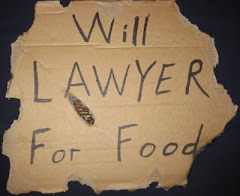Having been on the consumer end of consumer bankruptcy for several weeks now, I have gained some perspective (a dangerous thing, I know) on the recent economic meltdown.
My theory goes as follows: During the last ten or 15 years of steady economic growth, that growth has largely been fueled by consumer credit card debt. The boom in the consumer spending, on things like electronics, food, clothing, jewelry, vacations, and just about everything else, has largely been bought on credit. The statistics don't lie: the average consumer credit card debt is over $8,000. However, most households carry only about $2,000 worth - only 1 in 20 (5%) have more than $8,000 in debt. Total outstanding credit card debt in 2002 was $750 billion - the Gross Domestic Product of Australia.
That debt has almost no relation to any real number. Rather, the credit card companies transform that debt and turn it into a monthly payment. That payment is little more than a bribe for temporary respite, a purchase of time while the debtors wait for the other shoe to drop. The debt merry-go-round keeps going around only as long as those monthly payments, payments which only go to interest and fees and whatnot. Once that merry-go-round stops, the angry calls and collections start.
The main problem is that those payments are really only going to pad the earnings report of credit card companies. That money, the hard-earned money of working folks, is doing nothing. They are not buying consumer goods, not saving money, not buying a new car, not doing anything to stimulate economic growth.
The solution? This answer will be self-serving, but we should liberalize bankruptcy laws and clamp down on consumer credit. By making it easier to clear credit card debt, the hundreds of dollars families are spending on each month for their credit card respite will be turned instead towards economically stimulating activites. Secondly, by clamping down on the ease of access to credit cards, the slippery slope of the credit card money pit can be avoided.
To throw some numbers out:
Increase the exemptions for cars and real property by 50%, to protect the equity in the home: $3,600 for each car, and $22,500 (single) / $45,000 (joint) for real property.
Secondly, decrease the filing limits to every 5 years, from every 8, for chapter 7 bankruptcy. Also, increase the income levels to 30% over the median, instead of the median income.
These changes will make it easier to wipe credit card debt.
Now, as far as credit cards, put a limit on any revolving credit account for a person to $1,500 total, increasing the limit by $500 per year, and removing the limit after 10 years. Also, put strict limits on interest rates (say, prime + 15%) and all the various fees.
What will this accomplish? First of all, it will let most families get out of the credit card money pit, freeing up hundreds of dollars each month. That money can go to save mortgages, can be used to buy things to stimulate economic growth, and can generally be used in a more efficient way than buying time from the credit card company.
Secondly, the restrictions on credit cards will ensure that bad debtors, who suck with money, will have a much harder time racking up 5 figure credit card debts. The ease of bankruptcy will also force credit companies to be much more stringent with how they hand out credit.
Who will lose? The credit card companies will get hosed, big time. They are big, evil corporations and deserve it. Realistically though, their business model sucks anyway, and is likely doomed to failure, since it focues on easy credit, high interest, high fees, and short term gains over any long-term working relationship.
Who will win? Consumers and the economy as a whole. Who else will win? Consumers will win because they will be prevent from falling into the credit money pit, and one less pitfall will exist between them and financial independence.
Reflections
9 months ago
.jpg)



No comments:
Post a Comment